Browse Houses
Search Results: Returned 5516 records. Displaying results 1201 – 1300
| House name | Description | |
|---|---|---|
| Carrigacunna Castle | This house was the residence of Henry Baldwin Foote in the 19th century. Lewis writes that the estates of Monanimy, Ballygriffin & Carrigacunna formerly belonged to the ancient family of Nagle and that Carrigacunna was the residence of Sir Richard Nagle, Private Secretary to James II, who forfeited the estate in the late 17th century. In 1837 it was the property of H. B. Foott. He was the occupier in the early 1850s, the buildings were valued at £34 and the property was held in fee. Hajba writes that Henry's son George Carleton Foott lived at Carrigacunna until 1929. The Humphreys family were living here in the mid 20th century. The Irish Tourist Association Survey noted in the 1940s that Major Humphreys was residing in "a handsome modern mansions, adjoining the ruins of the old castle". The house was restored in the late 20th century. |

|
| Carrigafoyle Castle | Charles L. Sandes was leasing this property to Stephen Sandes at the time of Griffith's Valuation, when it was valued at £19 10s. It is described on the 1st edition Ordnance Survey Map as Carrigafoyle Castle but on the later 25" edition as Carrigafoyle House. In 1786 Wilson refers to it as "the ancient mansion of O'Connor Kerry, formerly a place of great strength and important.. but now serving as a store to transport goods from the adjacent places to Limerick". |
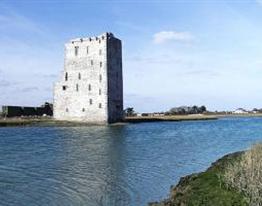
|
| Carrigaholt | Occupied by George Nolan in 1814 this house was the home of a branch of the Burton family for much of the 19th century, held in fee. Valued at £25 at the time of Griffith's Valuation, the original house no longer exists. Weir writes that a reconstructed three bay residence now occupies the site. The 16th century castle still stands in what were the demesne grounds. |

|
| Carrigaline B | Robert Atkins was leasing this property to Robert Bible at the time of Griffith's Valuation, when it was valued at £14. | |
| Carrigaline West | At the time of Griffith's Valuation, Rev. Charles McCormack was leasing this property from Michael Roberts when it was valued at £10. This may be the property which afterwards became known as Monroe House. Later in the century, Carrigaline Rectory was located in the townland of Carrigaline Middle (W730630) | |
| Carriganard | Two members of the Hartry family, William and NIcholas, were leasing houses from the Lane-Fox estate at Carriganard in 1848. William occupied the house valued at £12 7s while Nicholas held a house valued at £10 [S579089]. The original buildings do not appear to be extant now. | |
| Carriganass Castle | Held by William O'Sullivan from the Bantry estate in 1852 when it was valued at £15 10s. Lewis refers to it as the seat of W. O'Sullivan in 1837. Slater refers to it as the seat of J.E. Barrett in 1894. The house takes its name from the original O'Sullivan castle located a short distance away. | |
| Carriganear | At the time of Griffith's Valuation, John Beecher held a property at Maulbrack in fee and valued at £10 5s. This seems to be Carriganear House, mentioned by Lewis in 1837 as the residence of Mrs. Evans. There is still an extant house at the site. | |
| Carriganore House | John Strangeman was leasing this property from the Corporation of Waterford in 1850 when it was valued at £22. It now forms part of the Western Campus of Waterford Institute of Technology. |
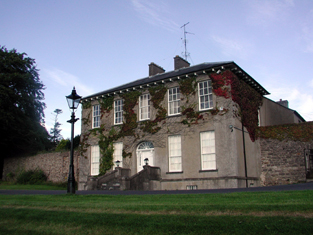
|
| Carrigaphooca | Henry Minhear was residing in this townland at the time of Griffith's Valuation. His house was valued at £21.10 shillings and was held from Thomas Williams. This may be the house 'Yew Hill' recorded by Lewis in 1837 the residence of J. Williams. A house is still extant at this site. | |
| Carrigataha | The home of W.J. Fennel in 1837 and in 1840. The Ordnance Survey Name Books describe it as "very pleasantly situated and in good repair". It was occupied by Thomas Fennell in the early 1850s. Thomas held the property from a member of the McCarthy family and the buildings were valued at £15. Buildings are still located at this site. | |
| Carrigavulleen | Charles Knolles and William Galway were leasing this house to Bartholemew Donovan at the time of Griffith's Valuation, when it was valued at £8 5s. It is still extant and well maintained. |
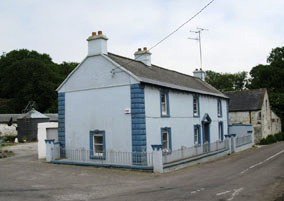
|
| Carrigboy | At the time of Griffith's Valuation, Rev. Alleyn Evanson was leasing this property to John Sullivan when it was valued at almost £8. In 1906 it was owned by Hanora Harding and valued at £17 15s. | |
| Carrigboy | E. Barrett resided at Carriguoy, parish of Kilmichael, in 1837. At the time of Griffith's Valuation John E. Barrett occupied this house valued at £15.10 shillings and held by him in fee. A lithograph of the house, with the hunt assembled outside the hall door, is included in the rental. | |
| Carrigeen | John Christy held a house valued at £21 and 513 acres at Carrigeen from the Earl of Dunraven at the time of Griffith's Valuation. A modern farm is extant at the site now. | |
| Carrigeen Hall | In 1786, Wilson refers to "Carrygeen" as the seat of Mr. Peard. Hajba writes that this house was the home of Peard Harrison Peard, son of Richard Peard of Coole Abbey and father of Richard Frederick Peard of Belvidere and Henry Peard of Carrigeen. Later the home of the Green and O'Grady families, now demolished. | |
| Carrigeen House | At the time of Griffith's Valuation, Carrigeen House was leased by John Connolly from the Joyce estate when it was valued at £5. It is labelled "in ruins" on the 25-inch map of the 1890s. | |
| Carrigerry | Built in the late 18th century, this house was occupied by John O'Halloran in 1814 and by Major Creagh in 1837. Mary Creagh, who held the property from Francis Macnamara was in residence in the mid 1850s. The house is now a country hotel run by Mr and Mrs N. Ennis see http://www.carrygerryhouse.com/index.html |

|
| Carrigfadda Glebe | At the time of Griffith's Valuation, Rev. Horace Townsend was leasing this property from The O'Donovan's estate when it was valued at £12 15s. In 1837 Lewis had noted it as the seat of R.B. Townsend. It is still extant and occupied. |
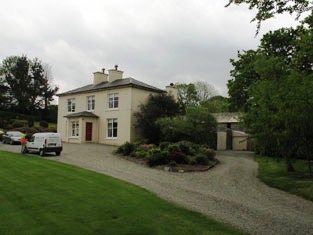
|
| Carrigfadda House [Town View] | At the time of Griffith's Valuation, Phillip Sullivan was leasing this property to George Pinchin, when it was valued at £7 15s. It is named Carrigfadda House on the 6-inch Ordnance Survey map and as Town View on the 25-inch map of the 1890s. A house still exists at the site. A George Pinchin was resident at Halt House, Wiltshire in the 1850s (see Burke's Peerage) while the family also had connections with county Kerry. | |
| Carriglea (Gaultiere) | Richard Phelan was leasing this property from Lord Waterford's estate at the time of Griffith's Valuation, when it was valued at £10 15s. It is no longer extant. | |
| Carriglea House | Built by John O'Dell in the early ninetenth century, in 1851 this property was held in fee by Edward O'Dell when it was valued at £59. On the 25-inch Ordnance Survey map of the 1890s it is labelled Carriglea Convent. It is still extant and a centre for care services. |

|
| Carrigmanus House | Rev. Thomas O'Grady was leasing this property to Nathaniel Lemon (?) at the time of Griffith's Valuation, when it was valued at £12. There is still a house at the site. |
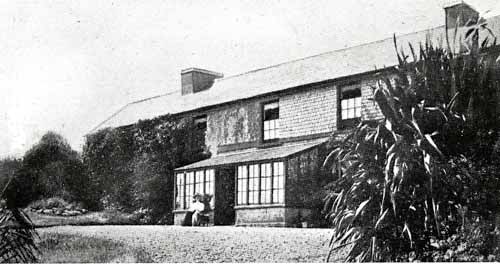
|
| Carrigmoorna House | In 1851 Thomas P. Sherlock held this property from Sir Edward Kennedy's estate when it was valued at £16. On the 25-inch Ordnance Survey map of the 1890s it is named Carrigmoorna House. A modern house appears to occupy the site. |
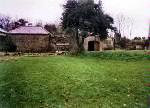
|
| Carrigmore | Richard Power was resident here in 1814 and Edward Morragh in the mid 19th century. Morragh held the property from the Duke of Devonshire and the buildings were valued at £18+. Later the home of the Cronin family. Hajba writes that this house has been unoccupied since 1990. | |
| Carrigmore House (Kinneigh) | James Lysatt [Lysaght] held a property in fee here, valued at £46, at the time of Griffith's Valuation. Bence Jones states that it was built in 1842 by James Lysaght on the site of an earlier house known as Connorville, which had been purchased by Lysaght from the Connor family. In 1837 Lewis had referred to it as "the deserted and dilapidated mansion of the O'Connors." In 1783 Taylor and Skinner had indicated Connorsville as a seat of the Connor family as had Wilson in 1786. An adjacent smaller house, known as Laurel Hill, was held by Adderley Bernard in 1851. Carrigmore House and 312 acres, the estate of James Lysaght, were advertised for sale in July 1853. A lithograph of the house is included in the sale rental. Lyons indicates that the estate was sold privately to James L. Holmes. Carrigmore and Laurel Hill were offered for sale in the Landed Estates Court in 1876, as part of the sale of the Holmes estate. Donnelly states that it was burnt in October 1920 during the War of Independence when it was the property of James H. Morton. The house is now derelict. | |
| Carrignacurra Castle | Masters esq was the occupier of Carronacurragh or Carrignacurra in the 1770s and 1780s. Jasper Pyne is recorded as the occupier of the castle at the time of Griffith's Valuation and it was held by him in fee. The buildings were valued at £17. | |
| Carrignavar | The castle of Carrignavar was from the mid 17th century the seat of this the senior branch of the McCarthy clan. Bence Jones writes that Carrignavar is a late 19th century castellated house incorporating the remains of the old castle. Lewis refers to Carrignavar as the seat of Justic McCarthy in 1837 and Justin McCarthy junior was resident at the time of Griffith's Valuation when the buildings were valued at £28. Bought by John Sheedy in the 20th century and sold by him in the 1950s to the Sacred Heart Fathers. The house is part of their college complex. |

|
| Carrigoon | Occupied by Timothy Collins in the early 1850s and held from Joseph C. Nagle. The buildings were valued at £13. In 1942 the Irish Tourist Association survey noted its association with David Nagle who was MP for Mallow in 1689. The survey mentioned the survival at that time of the stables and coach house. A small ruined portion of this property remains, in an area where extensive quarrying has taken place. | |
| Carrigoon Cottage | A house valued at £12 and located on the Franks estate in the mid 19th century when it was occupied by William Quane and held from William H. Franks. Buildings are still extant at the site. | |
| Carrigoon House | A Stawell home in 1750 and the home of Michael Nash in the latter part of the 18th century. Occupied by James Curtin in 1814 and by William H. Franks at the time of Griffith's Valuation. It was held by Franks in fee and valued at £15. A few ruins remain of this house. | |
| Carrigoran | An 18th century house the residence of the Fitzgerald family in the 18th and 19th centuries. Griffith's Valuation shows that the house was valued at £45 in the mid 19th century and that it was held by Sir Edward Fitzgerald from Matthew Rosengrave. An earlier house reputedly destroyed by fire in the late 18th century stood nearby. The house was bought by the Sisters of Charity of the Incarnate Word in the 1920s. The house was still in use in the 1940s but was demolished in the 1980s. |
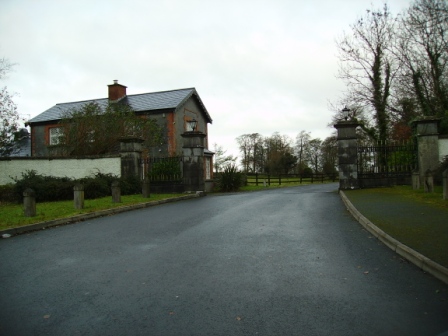
|
| Carrigrenan | Occupied by J. M. Ashlin (father of the architect George Ashlin) in 1837 and by the Reverend Robert Bury in the early 1850s. He held the house valued at £37 from Warren H. R. Jackson. The home of the Sullivans in the 20th century. | |
| Carrigrohane | The sale rental of 1856 describes the house as a "good residence" occupied by Noble Parker MD. | |
| Carrigrohane Castle | A fortified house that came into the possession of the Hoare family through marriage with a member of the Baker family in the 1770s. In 1786 Wilson refers to Carrigrohan as the seat of Mr. Colthurst. Reconstructed in the 1830s by Augustus Robert McSweeny, a corn merchant, who also leased the floor mills nearby. At the time of Griffith's Valuation Jane McSweeny was resident. The Castle later reverted back to the Hoares who owned it until the 1940s. They are mentioned by the Irish Tourist Association survey as resident there. It is still extant. |

|
| Carrigshane | Thomas Smithwick held a house valued at £15 with 44 acres from the representatives of Viscount Midleton at the time of Griffith's Valuation. This may be the property mentioned by Wilson as "Carrig" in 1786, a seat of the Uniacke family. Buildings are still extant at this site. | |
| Carrolton House | The house known as Beagh Lodge, an O'Carroll house, is shown on the First Edition Ordnance Survey . It is not visible on the 25-inch Ordnance Map of the 1890s. A house on a nearby site is labelled Carrolton House on the latter map. The original house is not extant though there are later buildings. |

|
| Carrowbarra House | In 1798 ‘Carrowbarragh’ was associated with William Campbell an attorney-at-law who immigrated to Canada. In the 1830s Lewis records Carrowbarrow as the home of the Reverend Michael Fox Dudgeon who married Mary Moore of Moore Fort, Ballymoney, Co Antrim. Later he was vicar of Cratfield, Surrey. Henry Dudgeon occupied a house valued at £1.10.0. in Carrowbarra Island at the time of Griffith’s Valuation. He held the property from Owen B. Cole and Olivia Lucas. Owen B. Cole and Olivia Lucas were the lessor of the townlands of Carrowbarra and Carrowbarra Island. Mary Johnston occupied a house valued at £6 in Carrowbarra townland in the 1850s. A substantial house named Carrowbarra House is marked on the 25 inch map in Carrowbarra Island. | |
| Carrowbeg | Occupied by Patrick Sweeney in 1814 and by Richard O'Grady at the time of Griffith's Valuation. The house has been renovated and modernized and is still inhabited. |

|
| Carrowbeg House | A former Bodkin house, the home of the Lynch family in the second half of the 19th century and early part of the 20th century. It was held in fee by Dominick Lynch at the time of Griffith's Valuation when it was valued at £8. It is still extant and in use. |
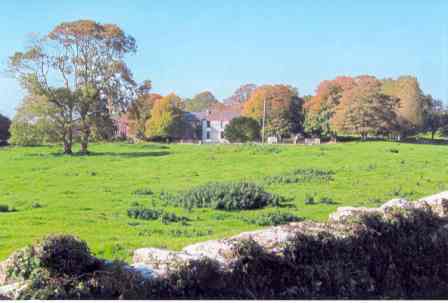
|
| Carrowbrowne Castle | In 1786 Wilson refers to Carrowbrowne as the seat of Mr. Blake. This may refer to Walter Blake as family history records suggest some of his children were born at Carrowbrowne. The castle is shown and labelled on the 1st edition Ordnance Survey map of 1842. The townland is part of Lord Oranmore and Browne's estate at the time of Griffith's Valuation. By the time of the 25-inch edition of the 1890s it is shown as "in ruins". Some ruins still remain at the site. | |
| Carrowcanon House | Thomas Olpherts was occupying the property at Carrowcanon at the time of Griffiths Valuation when it was valued at £15. Lewis had recorded it as the seat of T. Olpherts in 1837. This property seems to have developed at what was the site of a formal garden in Carrowcanon townland as shown on the 1st edition Ordnance Survey map of the 1830s. Buildings still exist at the site | |
| Carrowcrin | The Census of Elphin records Robert Burrowes as resident at Caracin in 1749. Johnston Burrowes was leasing a property valued at £3 to the Beatty family at Carrowcrin, barony of Tirerrill at the time of Griffith's Valuation. McTernan states that the property remained in the Burrows family until the early 1900s. It became vacant after the last of the family died and was eventually converted into farm-buildings. | |
| Carrowculleen House | At the time of Griffith's Valuation, Lecarrow was the property of Thomas Guilfoyle and was valued at £14. In 1906 Anthony Guilfoyle was the owner of the house at Lecarrow, valued at £31. McTernan notes that the property was purchased by Anthony Gilfoyle, a leading Sligo merchant, c.1806. It was extended in the 1840s. From the 1920s until the 1990s it was owned by the Mercy Order. The house is now part of the Holy Hill Hermitage complex. |
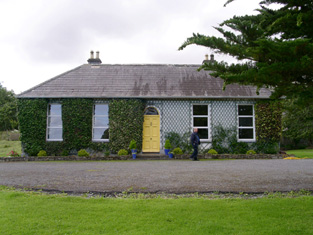
|
| Carrowdotia House | A house on the Vandeleur estate, it was the residence of William Daxon in 1814 and of R.D.Daxon in 1837. Valued at £17 at the time of Griffith's Valuation and occupied by James Cathro. This house now appears to be the centre of a working farm. |

|
| Carrowduff | Two houses are marked in the townland of Carrowduff on the first Ordnance Survey map. One was 'in ruins', R055 764. The other was named Emma Ville. At the time of Griffith's Valuation John Gray held a house valued at £15 and 56 acres from the Wyndham estate in this townland. Carrowduff House appears to have been renovated as it is labelled on both the 25-inch 1890s and the 1942 edition of the Ordnance Survey map. Neither house is extant now. | |
| Carrowgarriff | At the time of Griffith's Valuation, Edward Power was leasing this property from the Osborne estate when it was valued at £11 10s. The site is now occupied by farm buildings. | |
| Carrowgarry | In 1906 Alexander Crichton was the owner of Carrowgarry House, valued at £37. At the time of Griffith's Valuation, a herd's house, valued at £3 and part of the Crichton estate, was located here. |

|
| Carrowgowan | From at least 1814 the house was occupied by the Deanes who held it from Colonel McAlpine, who held from John Knox of Castlereagh. The house was described as in good repair, with offices, orchard and garden. Daniel H. Mellet occupied the house at the time of Griffith's Valuation. It is now demolished. | |
| Carrowkeel | At the time of Griffith's Valuation John F. MacDonagh held property valued at £12 at Carrowkeel, barony of Corran, from the Gore Booth estate. Lewis also records this as a MacDonagh property, describing it as a "fine modern residence". McTernan notes that Carrowkeel was probably built by Francis MacDonagh at the beginning of the nineteenth century. It remained in the family until its sale in the Landed Estates Court. It is still extant and occupied. | |
| Carrowkeel | In the Ordnance Survey Name Books of the 1830s Carrowkeel House, the residence of Walter Bourke, is described as "in good repair". The house was valued at £6 at the time of Griffith's Valuation. It is labelled Carrowkeel House on the 1st edition Ordnance Survey map of 1838 but is not shown on the 25-inch edition of the 1890s. | |
| Carrowkeel | James U. Burke was leasing the house at Carrowkeel from Charles Farrell at the time of Griffith's Valuation when it was valued at £9. In the 1830s the Ordnance Survey Name Books mention "a good dwelling and ornamental grounds" in the townland of Carrowkeel. It is still extant and occupied. |
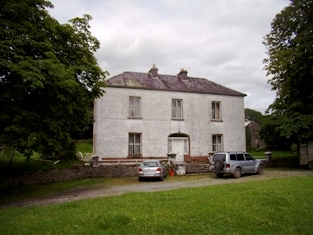
|
| Carrowleana House | At the time of Griffith's Valuation occupied by Andrew W. Irwin and valued at £15. The house has been demolished but the stables are still extant. | |
| Carrowmanagh Cottage | Carrowmanagh Cottage was the residence of Rev. Edward Hartigan in 1814. In 1837 Lewis records it as the seat of Thomas Bermingham. It was included in the sale of the Ashtown estate in the Encumbered Estates court in 1851. At the time of Griffith's Valuation it was leased by Rev. Frederick Trench to Crawford Allen. Some ruins remain at the site. | |
| Carrowmore | An early 19th century Palmer house, the home of a member of the Palmer family from the late 18th century. Wilson refers to it as the seat of Mr. Palmer in 1786. In the 1850s it was occupied by Captain Arthur Wade and valued at £20. A McCormick home in the 20th century. A house still exists at the site. |
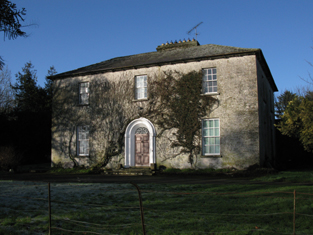
|
| Carrowmore | Carrowmore was occupied by John Davis at the time of Griffith's Valuation, when it was valued at £8 and leased from the Gunning estate. It is labelled Carrowmore House on the 25-inch Ordnance Survey map of the 1890s. A house still exists at the site. | |
| Carrowmore/Carramore | Wilson notes "Keromore" as the seat of Mr. Vaughan in 1786. The Ordnance Survey Name Books refer to the house as "a modern structure built in 1819". At the time of Griffith's Valuation it was held in fee by Captain O. Jackson and valued at £30. The Irish Tourist Association File states it was a guest house in the 1940s run by Mrs Reid. Bence Jones writes that it is now a ruin. | |
| Carrownacregg West | Originally a Concannon house, sold to the Brownes in 1851 when it was in need of repair and to the Hughes family in the early 20th century. The original house is no longer extant. |
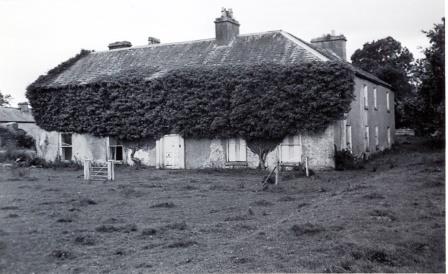
|
| Carrownacroagh | Home of William Skerrett in the 1830s. By the time of Griffith's Valuation, the townland was in the possession of Dominick O'Flaherty but there was no house with a valuation greater than £2. |
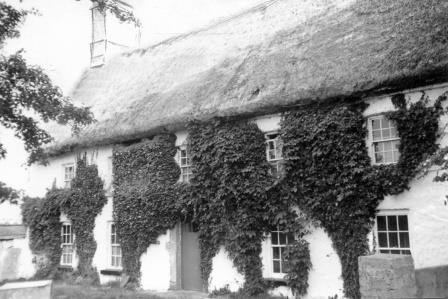
|
| Carrownaff Cottage | A house labelled Carrownaff Cottage appears in Carrownaff townland on the 25-inch edition Ordnance Survey Map. John Barr was leasing a property from the Hazlett estate at the time of Griffith’s Valuation, which was valued at £14. | |
| Carrownaff Lodge | Newspaper reports from the 1860s describe William Hazlett as of “Carrownaff Lodge”, Moville. This house appears on the 25-inch edition Ordnance Survey map of the early 20th century. The National Inventory of Architectural Heritage suggests a date of c.1860 for the construction of buildings at the site of Carrownaff Lodge, which is now demolished. | |
| Carrownamaddy (Burt) | At the time of Griffiths Valuation in the 1850s, Joseph Dysart was leasing this property from Lord Templemore (Chichester) estate, when it was valued at £15. A house and substantial farm remain at the site. | |
| Carrownea | At the time of Griffith's Valuation, William Evans was leasing a property valued at £10 at Carrownea, parish of Ballymacward, from the Clancarty estate. Earlier in 1837, Lewis had recorded Carrownea as the seat of J. Fitzsimons. Flynn writes that, in 1850, the lease of Carrownea House and lands passed to William Evans, brother of John Cannon Evans of Cross House. There is still an extant house at Carrownea. | |
| Carrowneden | Jon Treston was leasing this house, valued at £4, from the O'Farrell estate at the time of Griffith's Valuation. A house is still extant at the site. | |
| Carrowntryla | Occupied by Henry esq in the 1770s and in 1786. It was the home of the Handcock family in the 19th century, sold to Captain Dick in 1897 and occupied by him in the early years of the 20th century. Bought by Major Gerald Stratford Handcock in 1928 and inherited by his niece, Mrs Voss, who sold the house to Hector McDonnell, a Galway building contractor. The house is no longer extant. |
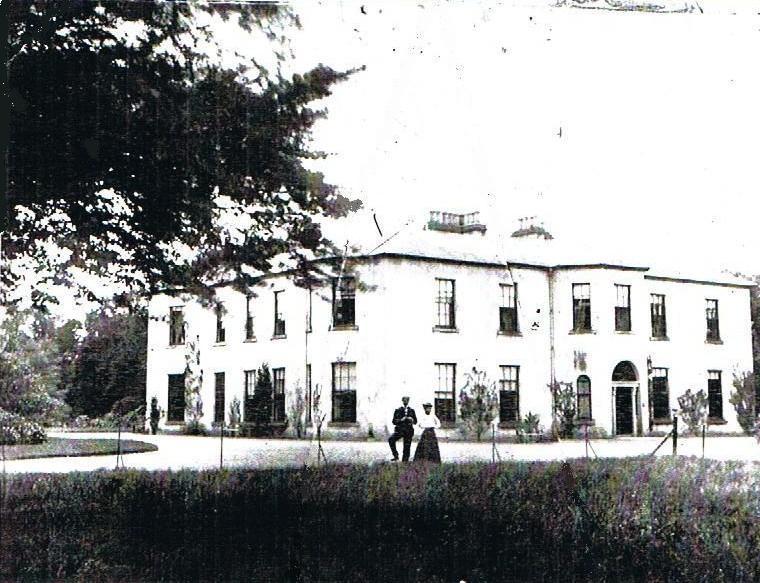
|
| Carrownure House | In the mid 1850s valued at £20 and owned by Richard Bond in fee, who advertised it for sale in 1856. Described as a modern edifice on the shore of Lough Ree. The sale rental includes a lithograph. Bought by Bernard William Bagot in 1858 from Edward John Irwin. Sold by the Bagots to Samuel Auchmuty in 1903. Owned by the Auchmutys in the 20th century and known as Carnure House. |

|
| Carrowpadden | Carrowpadden House is marked on the Taylor and Skinner map of 1778. In 1786 Wilson refers to it as the seat of Mr. Higgins. A herd's house occupied by Thomas Higgins who held it from James Higgins is recorded in the townland of Carrowpadden East at the time of Griffith's Valuation. It was valued at almost £5. This property appears to have been built after the first Ordnance Survey map was published. There is still a house extant at the site. | |
| Carrowreagh | Richard O'Farrell Caddell was leasing a "herd's" house valued at £8, together with over 350 acres, at Carrowreagh, barony of Boyle, to Thomas Boylan, at the time of Griffith's Valuation. A house and farm are still extant at the site. Patrick Fox was leasing a mill property from the Caddell estate in the same townland. Some stone buildings remain at the site though the mill was described as "in ruins" on the 25-inch Ordnance Survey map of the 1890s. | |
| Carrowroe House | In 1786, Wilson refers to "Carrorowe, at present uninhabited". At the time of Griffith's Valuation, John Dennis was leasing a property at Carrowroe North, barony of Athenry, valued at £15, from Lord Dunsandle's estate. Buildings remain at the site. |

|
| Carrowroe Lodge | Sir Thomas Burke's estate held a house valued at £8 at Carrowroe in the parish of Ballynakill, barony of Leitrim, in 1856. Lewis records Carrowroe Lodge as the residence of H. Clarke in 1837. It was the property of Sir Henry Burke in 1906 when it was valued at just over £8. This house is still extant and occupied though it has been modernised. |

|
| Carrowroe Park | The home of the Goff family in the 19th century. Described by Lewis as a substantial and handsome mansion of limestone with a Doric portico, the residence of R. Goff. In the 1850s occupied by the Reverend William Battersby, who held the property from the Earl of Essex. Reverend Battersby was married to Mary Maud Caulfield, a daughter of John Caulfield, Archdeacon of Kilmore. The house was valued at £65. By the 1870s the residence of John Burke and the seat of Lt-Col. Michael A. Burke in 1894. Still extant and offered for sale in 2008 (Irish Times, 5 June 2008). |

|
| Carthage House (Inishowen) | Thomas Jackson was leasing this property from the Young estate at the time of Griffith’s Valuation, in the 1850s, when it was valued at £13. In 1837 Lewis referred to it as the seat of Reverend James Knox. The National Inventory of Architectural Heritage suggests it was built around 1775. It is still extant and occupied. |
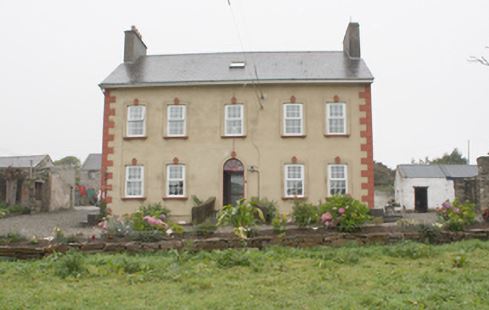
|
| Cartown | Built in 1763 Cartown was the residence of Mr Baldwin in 1826 and of John Edward Langford in 1837. In the early 1850s Griffith's Valuation records the vacant house as valued at £24, William Sheedy holding the whole townland from General James Caulfeild. By the late 19th century the house was in the possession of the Westropp family. This house is still extant and occupied. |

|
| Cartown | In 1783 Taylor and Skinner recorded Cartown, close to the town of Carrick-on-Shannon, as a seat of the Cunningham family and Wilson, writing in 1786, also refers to it as the seat of Mr. Cunningham. At the time of Griffith's Valuation George Church was in possession of a property in this townland, valued at £12, described as "unfinished". The house shown on the 25-inch Ordnance Survey map of the 1890s is substantially larger than the 18th century house. The house now at this site has had commercial premises attached to it but is still extant. |
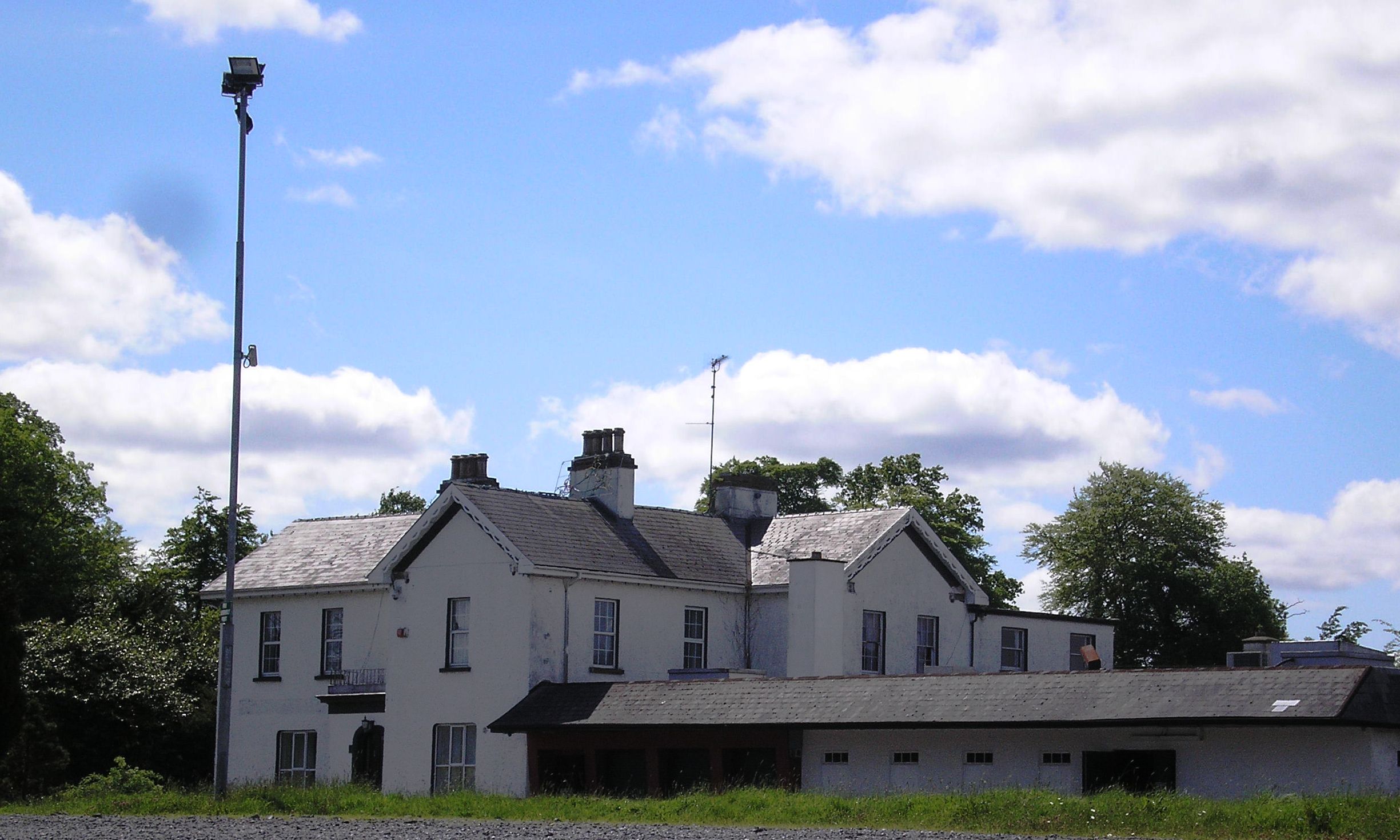
|
| Cartron | Occupied by Francis Flanagan at the time of Griffith's Valuation, who held it from James Murphy. | |
| Cartron | A 19th century house used as a summer residence by the Brady/Brady Browne family, now a ruin. | |
| Cartron | Built by Joseph Reville at a cost of nearly £1,000, Cartron was held by the Revilles under a lease dated 31 Oct 1856 from Robert Graham to Richard Reville for 3 lives and 87 years. The home of a member of the Lushington Tulloch family in 1906 and still remains in the possession of a descendent of this family. |
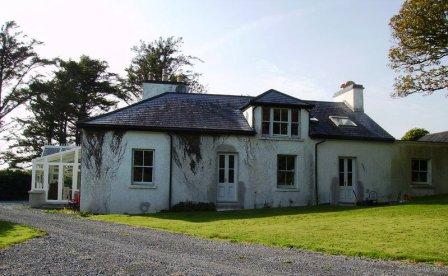
|
| Cartron (Duniry) | In 1906 Lawrence Egan owned a property valued at £5 at Cartron, barony of Leitrim, county Galway. Patrick Egan had held almost 200 acres here at the time of Griffith's Valuation but the buildings valuation at that time was less than £1. A house still occupies the site. | |
| Cartron (King) | The home of the Waldron family in the 18th and early 19th centuries. Occupied by Gilbert Hogg in 1837. Valued at £10 and occupied by John B. Hogg at the time of Griffith's Valuation who held the house from Sir Gilbert King. A substantial farm is still extant at the site. | |
| Cartron House (Ballynakill) | On the first-edition Ordance Survey map this building is labelled "police barracks" but is shown on the 25-inch map of hte 1890s as Cartron House. At the time of Griffith's Valuation it was still a police barracks and valued at over £12, when it was part of the estate of Sir Thomas Burke of Marble Hill. Madden states that evictions on this estate had resulted in buildings in the area being attacked. Cartron House is still extant and occupied. |

|
| Cashel | Built by Thomas Hazell for his agent. Hazell was leasing land from the Law Life Assurance Society at the time of Griffith's Valuation, when the house was valued at £6. Bought by James O'Mara (1873-1948) circa 1924, who was a Home Rule supporter and later a member of Sinn Fein. He represented South Kilkenny in the House of Commons and in the first Dáil Éireann. In 1952 the house became the home of Lieutenant Colonel and Mrs Browne Clayton. The house is now run as a hotel by the McEvilly family. |

|
| Cashel House | Built before 1838, this house was the residence of the Blakes of 'Tully' and was occupied by James Blake, nephew and agent, to his uncle Patrick Blake in the mid 19th century. Arthur Blake, succeeded his father at Cashel and lived there until about the 1870s. The Blakes were very unpopular landlords and the house is now in ruins. | |
| Cashel House (Kilmacabea) | William Wolfe was leasing this property, then valued at £12, from Miss Wheeler, at the time of Griffith's Valuation. Local records suggest the family were associated with this house since the eighteenth century. The original house is no longer extant and a modern house exists at the site now. | |
| Cashelmore House | In 1851 Thomas Beamish was leasing this property from Richard Longfield O'Connor when it was valued at £18. Lewis refers to it as the seat of J. Beamish in 1837. It was the residence of John Beamish in 1814. Buildings are still extant at the site. | |
| Cashlieve House | Lewis describes a house at Cashla in the parish of Kiltullagh as a sporting lodge belonging to W.R. Wills in 1837. In the 1850s William Sandford owned a property valued at £24 at Cashlieve, barony of Castlereagh. The house now known as Cashlieve House was built in the later nineteenth century. |

|
| Casino | Mrs Hyde was residing at Cassina, Castlemartyr in 1814 and in the early 1850s it was occupied by Wallace Adam Walker who held the property from the Earl of Shannon. The buildings were valued at £20. W.A. Walker was still resident in the 1870s. This house is still in use as a residence. |
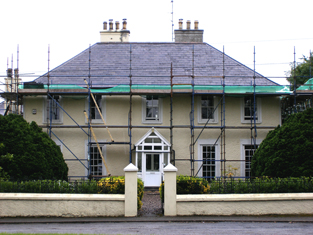
|
| Casino House | At the time of Griffith's Valuation, Eliza Sealy was leasing this property to Sidney Howe, when it was valued at almost £7. Casino House is now a gourmet restaurant. See www.casinohouse.ie. |
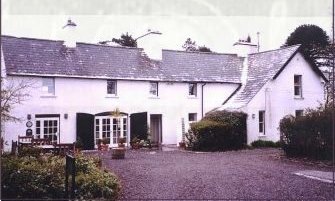
|
| Castle (Newtowncunningham) | Henry McCoy was leasing this property from John S. Law at the time of Griffiths Valuation in the 1850s, when it was valued at £17 10s. The lease also included two flaxmills. This property is labelled Castle on all editions of the Ordnance Survey maps. Campbell records that in the 1790s, the Castle in Newtowncunningham was the home of Lady Hamilton, widow of Sir Henry Hamilton and that the McFarland family were the last occupants. | |
| Castle Bellew | Occupied by Peter Geraghty in the mid 1850s when it was valued at almost £9, this house is labelled as Castle Bellew House on the 25-inch Ordnance Survey map of the 1890s. It is no longer extant with some ruins remaining at the site. | |
| Castle Bernard | Described by Lewis in 1837 as " a stately mansion, built in 1806, adjacent to the site of the former castle" and originally known as Castle Mahon. It was the seat of the Bernard family in the late 1770s and 1780s and then known as Castlebernard. Occupied by Viscount Bernard at the time of Griffith's Valuation and valued at £120. It was burnt in June 1921 and is now a ruin adjacent to Bandon Golf Club. |

|
| Castle Biggs/Drominagh | The Smythe sale rental of July 1870 states that the original lease (1711) was from Godfrey Boate and Benjamin Friend to William Biggs. Built by the Biggs family on the shore of Lough Derg this house was occupied by William L. Biggs in 1814 and by Dr W. Biggs in 1837. In 1840 the Ordnance Survey Name Books refer to Castle Biggs as "a most commodious house". Edward Biggs was resident in the mid 19th century, holding the property from Sir John Power. The house was valued at £22. The sale rental of November 1853 describes this "3-storey mansion containing every necessity and a range of out offices". It was in the possession of Edward Biggs, the owner, and was bought by Captain William Tuthill. William Tuthill sold the property to Frederick Smythe in 1859. It was for sale again in July 1870. At this time the Esmondes of county Wexford bought it from Frederick Smythe. In the early 1940s owned by Owen Esmonde but purchased by the Moss family in the 1940s. It is still extant. |
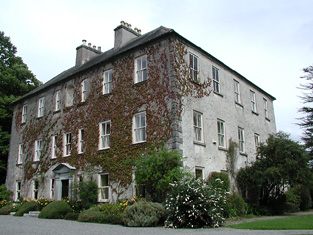
|
| Castle Cooke | A house was located here from the 17th century. Originally home of the Cooke family it was altered and expanded in the succeeding centuries by the Collis family. William Collis was resident for much of the 19th century. The house was valued at £32 in the early 1850s and at £34 when occupied by Colonel William Cooke Collis in 1906. It was burnt in June 1921 during the War of Independence when it was the residence of Col. William Cooke-Collis. This house is no longer extant. | |
| Castle Cosby | Castle Cosby was situated close to a small lough of the same name. A number of other country houses were located in close proximity, such as Lismore. J. Whitethorne was resident at Castle Cosby in the 1830s and 1840s. By the mid-1850s Andrew Smith was the occupant holding the property from John E. Vernon. It was valued at £16. In 1876, Philip Smith of Castlecosby owned 77 acres in co Cavan. He married Delia Mary daughter of Corney Banahan of Renny, Co Roscommon and had a number of sons who became doctors. His third son Frederick Paul married in 1905 Isabella Ann daughter of Edward Smith of Bellamont Forest. Castlecosby was mainly known as Kevit Castle under Smith ownership. The house is now demolished but a gate lodge is still extant. |
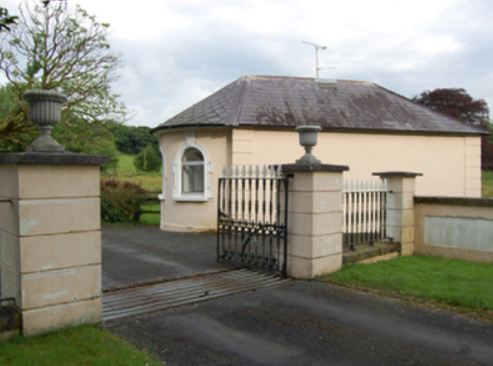
|
| Castle Cove | Thomas Jermyn was leasing a house valued at £10 10s to John Jermyn at the time of Griffith’s Valuation. Lewis describes Castle Cove as the seat of Mr. O'Sullivan in 1837 though he may have been referring to West Cove House. Leet, in 1814, mentions "Cooe Castle" as the seat of David Jermyn, Bary notes that Castle Cove was in the possession of the Jermyn family in the nineteenth century. They were agents for the Bland estate. It is no longer extant. | |
| Castle Dargan | At the time of Griffith's Valuation, Castle Dargan was the property of John Ormsby and was valued at £14. McTernan writes that the Ormsbys had been in possession of the lands since the seventeenth century and had lived at the "old" castle before the building of the house. In 1906 it was owned by John Hosie. It continued in the Hosie family until c.2004 when it was converted into a hotel and golf course. The house has been refurbished and is in use. See www.castledargan.com |

|
| Castle Downeen | James Courcey was leasing Castle Downeen from Rev. John Smyth in 1851 when it was valued at £23 10s. Lewis refers to the house as the seat of R. Smith in 1837. Shown as a Smith residence on Taylor and Skinner's 1783 map. In 1944 the Irish Tourist Association Survey refers to "Duneen" as "now a farmer's dwelling". It is now a ruin. | |
| Castle Ellen | Castle Ellen was built in 1810. It is described as the property of Captain Lambert in the Ordnance Survey Name Books. At the time of Griffith's Valuation it was owned by Walter Lambert and was valued at £21. In 1906 it was owned by the representatives of Peter F. Lambert at which time it was valued at £35. It is still extant and occupied. For more information see www.castleellen.com. For more information on the genealogy of the Lambert family see http://www.familylambert.net/History/index.htm |

|
| Castle Eyre/Listarkin | At the time of Griffith's Valuation, Colonel W. French was leasing this property to William Lowth, when it was valued at £9 15s. It is labelled Castle Eyre on the 1st Edition Ordnance Survey Map but as Listarkin on the 25-inch map of the 1890s. It is still extant and occupied. |

|
| Castle Farm | IN 1851 the farmhouse at Castlelands was held in fee by the Devonshire estate and valued at £27. The farm house is still extant and occupied. A large farmyard complex was located at X035986. In 1906 the buildings at this location had a valuation of £15 10s. |

|
| Castle Fogarty | Lewis writes that Castle Fogarty was "the ancient seat of the O'Fogarty family from whom it descended to the present proprietor J. Lanigan". He describes it as a "square castellated mansion, with embattled towers at the angles". The seat of the Lenigan family in the 18th and 19th centuries [held from the Earls of Portarlington until the fee was purchased in the mid 19th century]. Noted by Slater as the seat of Captain Vivian Ryan-Lanigan in 1894. A ruin since it was burnt in 1922. |

|

